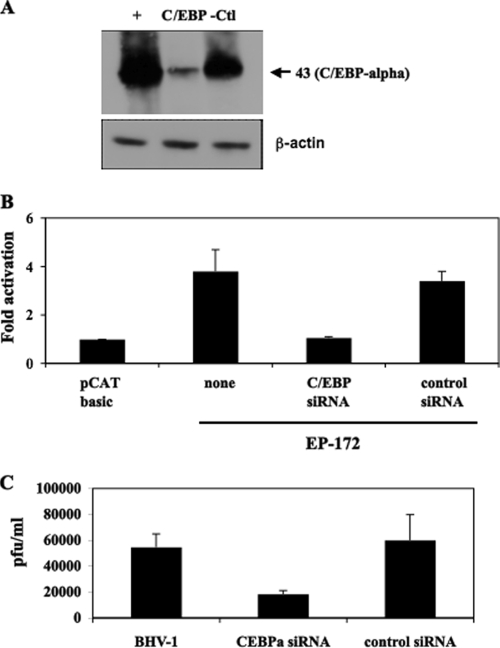FIG. 5.
The C/EBP-alpha siRNA inhibits the ability of DEX to stimulate bICP0 E promoter activity. (A) Neuro-2A cells were cotransfected with 1 μg of C/EBP-alpha and either 100 nM C/EBP-alpha siRNA or the control siRNA. At 48 h posttransfection, cells were collected and lysed with NP-40 lysis buffer, and 30 μg protein was electrophoresed by 12% SDS-PAGE. Proteins in the gel were transferred onto a polyvinylidene difluoride membrane and probed with the C/EBP-alpha antiserum that was diluted 1:500. The molecular mass marker is in kilodaltons. (B) Neuro-2A cells were cotransfected with 1 μg of EP-172 and with 100 nM C/EBPα siRNA or a control siRNA, as described in Materials and Methods. Four hours later the transfection complex was removed and replaced by fresh medium containing 1 μM DEX. At 48 h posttransfection, cells were collected and processed for CAT activity. CAT activity of cells transfected with the control pCAT basic vector was given a value of 1. All other values are expressed as the relative increase in activation with respect to the control. The results are the average of three independent experiments. (C) RS cells were transfected with the C/EBP-alpha siRNA (100 nm), the control siRNA (100 nm), or no siRNA. Twenty-four hours after transfection, cultures were infected with wt BHV-1 at a multiplicity of infection of 0.1. At 24 h after infection, plaque assays were performed as described in Materials and Methods.

